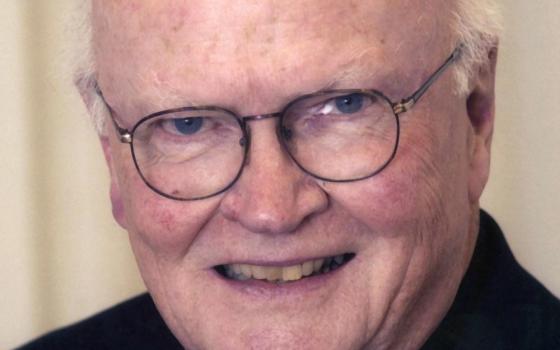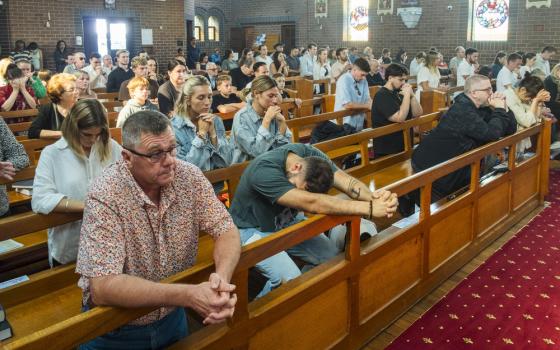 FROM THE BACK OF THE PEWS TO THE HEAD OF THE CLASS: THE REMARKABLE ACCOMPLISHMENTS OF A SEGREGATED CATHOLIC HIGH SCHOOL IN THE DEEP SOUTH
FROM THE BACK OF THE PEWS TO THE HEAD OF THE CLASS: THE REMARKABLE ACCOMPLISHMENTS OF A SEGREGATED CATHOLIC HIGH SCHOOL IN THE DEEP SOUTH
Edited by Robert McClory
Published by ACTA Publications, $14.95
Segregation was harmful to both blacks and whites. It was never equal as ordained by the U.S. Supreme Court in the 1896 case Plessy v. Ferguson. Rather, as was pronounced by the same court in 1955 and 1956, segregation, especially of schools, was particularly damaging to black students.
Despite all of this, there are many examples to be found of black segregated schools that flourished in the South and were able to provide their students not simply with a "separate but equal" education, but an education that, in many ways, surpassed that provided to white students in the same city.
In From the Back of the Pews to the Head of the Class, Robert McClory has compiled and organized dozens of stories told by the former students of the Most Pure Heart of Mary Roman Catholic High School in Mobile, Ala. Founded in 1917 and staffed initially by the Holy Ghost Sisters of San Antonio, followed by the Franciscan Sisters of Philadelphia and the Dominican Sisters of Sinsinawa, Wis., it was "the only black Catholic high school within 150 miles of Mobile." The school flourished until 1968, when then Archbishop Thomas Toolen ordered that all Catholic schools be integrated.
The book is a delightful but sometimes painful look at the treatment, by both church and state, of blacks in the Deep South prior to and during the civil rights movement, with a special emphasis on the ways in which the young were affected. They speak of the hurt they experienced from the way their white fellow citizens, and especially other Catholics, treated them.
But Most Pure Heart of Mary's graduates, despite being segregated from white Catholic students, excelled in their work and went on to graduate from some of the leading colleges in the country, particularly Xavier University. As alumna Alexis Herman, the first black secretary of labor (under President Bill Clinton), wrote: "Though the students were segregated with inferior resources, they were rich in talent, in community and in the gifts of the Spirit. … Many have gone on to become leaders in business, government, medicine, education, church, the military, the arts and politics."
The personal stories related here are encouraging, and can bring the reader to laughter and occasionally to tears. Alumni relate stories of having to sit in the back pews in some parish churches, and of going to Catholic school events and having to sit apart from the other students. Other stories recount participating in the annual archdiocesan May parade only to be placed, year after year, at the very end, so that by the time they finished marching, the celebration of the Mass was over.
On a more hopeful note, some alumni speak of their love for the sisters who loved and fought for them in both the chancery and the mayor's office, while providing them with an education that surpassed the expectations of those who saw "negro" students as incapable of any true learning.
Mobile was relatively passive during the civil rights movement. Black leaders, mostly ministers, refused to invite Martin Luther King Jr. to their city for fear of the possible disruption his presence would cause. After his assassination, however, and against these leaders, the people themselves became involved in the movement. Most Pure Heart of Mary became the meeting place for the newly formed Neighborhood Organized Workers who rallied and held meetings and marches across the city in the face of initially staunch resistance from city officials. Sadly, that same year was the last for the high school. From that point forward, all Catholic schools were integrated. The grammar school, founded in 1902, continues to prosper to this day.
This very interesting, small book reminds us of how, despite Jim Crow segregation, black Catholics were able to create a safe space, a home for themselves within the Catholic church. It also reveals, sadly, the church's complicity with Jim Crow and its many harsh and demeaning aspects. Yet, it also reveals how leaders in the church were able to recognize finally the disparity between the teachings of Jesus and their attitudes and practices regarding African-Americans. Change was slow, yes, but it happened inevitably. McClory's collection is a welcome addition to the growing number of memoirs that remind us of how things used to be and provide us with much-needed guidance on how things should be today.
[Diana L. Hayes is professor emerita of systematic theology at Georgetown University.]
October 16, 2013
A version of this story appeared in the Oct 11-24, 2013 print issue under the headline: School fought for its segregated students.




